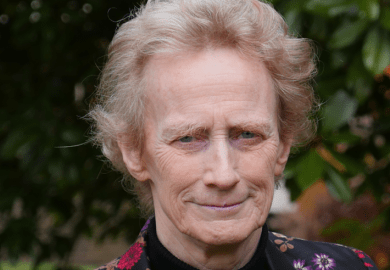My review for this book is overdue for a simple reason. I was so impressed by the breadth of examples contained in its 336 pages that I immediately set about using it to update one of my own undergraduate courses.
K. K. Tung guides the reader through a library of deterministic mathematical models of everyday experience, from sunflowers to global warming, the worldwide web to marriage. The level of mathematics employed climbs from high school through to nonlinear partial differential equations. Yet this evolution passes smoothly due to a precise mathematical application of Occam's razor, coupled with a free-flowing textual style.
As befits an undergraduate text, the models vary in complexity. For example, my divorced colleagues were keen to point out that the chapter on "Marriage and divorce" used modified "predator-prey" models. Both the model and experimental work show that crockery-throwing "volatile" partners tend to have stable marriages owing to an otherwise positive outlook on life. The later chapters in the book, modelling El Niño and global warming, could easily serve as a basis for a final-year UK undergraduate project.
Other topics covered include branching vascular networks, city size, paper citations, the chaotic sensitivity of interest payments, harvesting and the absence of large Australasian carnivores. Traditional subjects include Keplerian orbits, radioactive dating, chaotic maps, Lorentz attractors and bridge collapses.
Tung's comments in three areas raised my non-American eyebrows.
In the chapter on climate models he refers to the global warming "controversy". A serious, detailed and wide-ranging discussion of the physical issues is presented and Tung, himself an atmospheric scientist, points out that models predict a range of global temperature rises. Of the lower estimate of a 1.5C rise, he says it "may be, to some people, more benign to human society. Given the high cost of the proposed remedy to nations' industrial production, the large scientific uncertainty from model-predictions fuels political debates on whether nations should undertake immediate action to curb carbon dioxide emissions despite the cost".
Bible quotations and modern creationism theories occur in the treatment of Kelvin's model of the age of the Earth. Then there is the restriction of guerrilla war models to Vietnam (rather than more recent, politically sensitive examples).
These actually illustrate important lessons. First, mathematical models are only as good as their assumptions and the input data. Models of complicated systems often rely on incomplete knowledge. Second, outside controlled laboratory settings human opinions are encountered. Nevertheless, modelling is there to predict and inform decisions. If models stand up to rigorous tests then, as scientists, we must strongly argue for the results to be given due weight in any decision process, regardless of unproven political, social or religious views.
Who is it for? A wonderful source book for all kinds of undergraduate mathematical activities.
Presentation: Extremely clear.
Would you recommend it? It is highly recommended.
Chris Howls is senior lecturer in applied mathematics at Southampton University.
Topics in Mathematical Modeling. First Edition
Author - K. K. Tung
Publisher - Princeton University Press
Pages - 336
Price - £26.95
ISBN - 9780691116426
Register to continue
Why register?
- Registration is free and only takes a moment
- Once registered, you can read 3 articles a month
- Sign up for our newsletter
Subscribe
Or subscribe for unlimited access to:
- Unlimited access to news, views, insights & reviews
- Digital editions
- Digital access to THE’s university and college rankings analysis
Already registered or a current subscriber? Login


